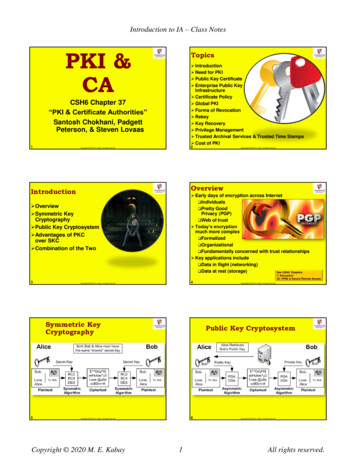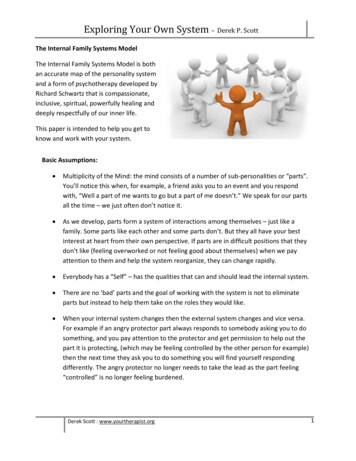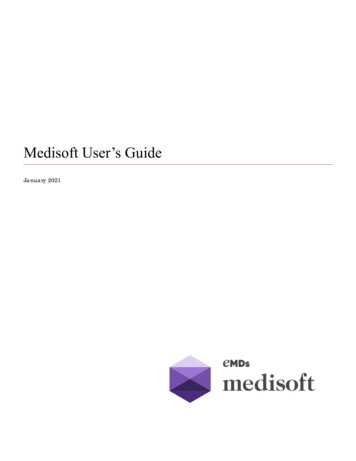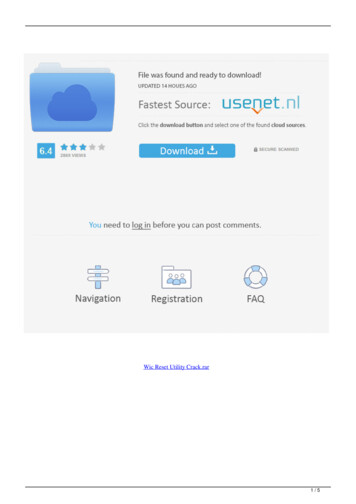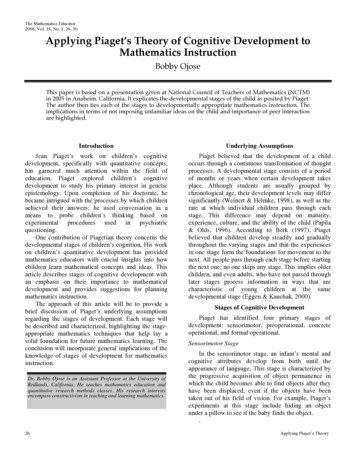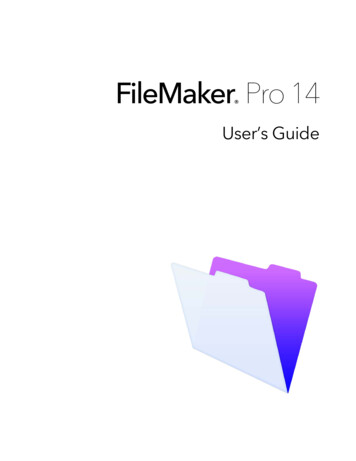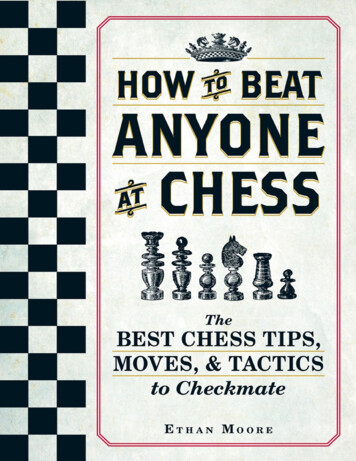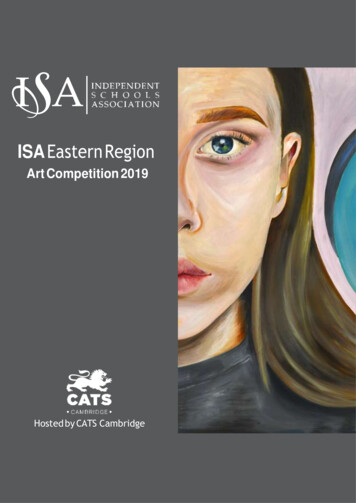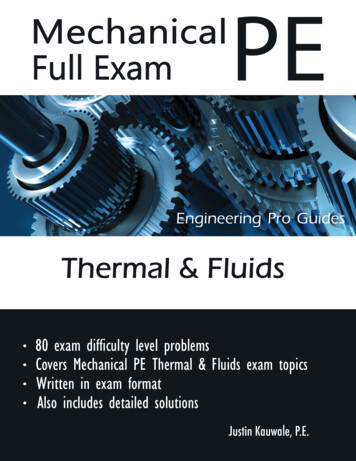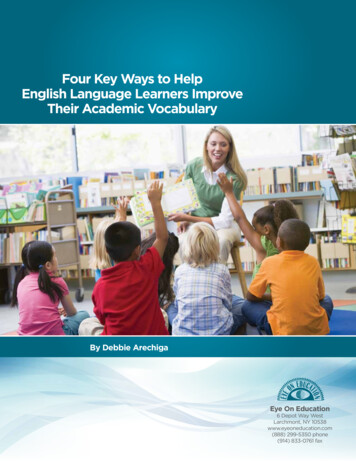
Transcription
Four Key Ways to HelpEnglish Language Learners ImproveTheir Academic VocabularyBy Debbie ArechigaEye On Education6 Depot Way WestLarchmont, NY 10538www.eyeoneducation.com(888) 299-5350 phone(914) 833-0761 fax
Four Key Ways to Help EnglishLanguage Learners Improve TheirAcademic VocabularyBy Debbie ArechigaThe Common Core State Standards require that English language learners “meet thesame high standards” as other students (Common Core State Standards,p. 6). However, the standards do not define the supports necessary to help ELLs getto those increased levels of learning. Many teachers are concerned that the new standardswill cause ELLs to fall behind. How do we prevent this from happening? It all starts withvocabulary instruction. “Learning, as a language-based activity, is fundamentally andprofoundly dependent on vocabulary knowledge” (emphasis supplied) (Baker, Simmons,& Kame’enui, 1998, p. 183). We’re not just being told here that vocabulary is a help inlearning. It’s much bigger than that. “Profoundly dependent” and “fundamental” tell usthat learning can’t really happen without appropriatevocabulary. Learning starts with vocabulary, is continuallyVocabulary shouldenlarged by new and richer vocabulary, and can fail forbe ubiquitous in ourlack of vocabulary. We must be sure to give Englishinstruction. It has tolanguage learners (and all students) sufficient vocabularyunderlie and infuseinstruction throughout the day, in our moment-by-momentevery sphere ofclassroom interactions. Vocabulary should be ubiquitous inlearning, includingour instruction. It has to underlie and infuse every sphereof learning, including every element of literacy (reading,every element oflistening, discussing, and writing) and every content domain.literacy (reading,How can we make that happen? Here are four big ideas thatlistening, discussingwill enrich your verbal environment, add stimulus to yourand writing) andvocabulary instruction, and expand ELLs’ vocabularies inevery content domain.productive ways.1Copyright 2012 Eye On Education, Inc. Larchmont, NY. All rights reserved. www.eyeoneducation.com
Four Key Ways to Help English Language LearnersImprove Their Academic Vocabulary1. Be deliberate with your own vocabulary.Who do students listen to for much of the school day? You! The vocabulary you use in your classroomcan have a powerful impact. As explained further in my book, Reaching English Language Learners in EveryClassroom (Eye On Education, 2012), there are several ways to connect words to meaning for our ELLs, suchas predictable routines, gestures and physical movements, objects and pictures, and hands-on activities.Once routines are established, think about deliberately using words that stretch students’ concepts andintroduce academic terms. For example, you might direct younger students to observe an activity ratherthan watch it, or ask older students to articulate rather than explain what an author means in a particularpassage. Instead of constantly using the same phrases for classroom routines, find new and imaginativewords to communicate your messages or instruction. Our language usage should represent the best modelin the classroom. Our students will imitate what they see, hear, and experience.We can also be deliberate in our language usage to provideInstead of constantlythe “bridge” for students to attain higher levels of cognitiveusing the same phrasesand language proficiency through instructional conversations.Good instructional conversations are engaging and lively,for classroom routines,but not random. They focus around ideas or activities thatstudents are exploring, and the theme or learning objective isfind new and imaginativemaintained throughout. An important dimension of instructionalwords to communicateconversation is what I call “bridging for language.” This includesusing opportunities in our moment-to-moment exchanges toyour messages orclarify and enrich students’ language, as well as familiarizinginstruction. Our languagestudents with academic language. When students don’tunderstand the meaning of a phrase, an idiom or a sentence,usage should representwe can bridge that for them through paraphrasing. If they usedifferent tenses in a single sentence or put an adjective in thethe best model in thewrong place, we can recast their statement to model correctclassroom. Our studentsusage. When they are unsure of how to express an idea, we cansuggest language structure (“You might say .”). “Strategically,will imitate what they see,the teacher introduces provocative ideas or experiences, thenhear, and experience.questions, prods, challenges, coaxes, or keeps quiet extendingdiscussion around ideas that matter to the participants, allowingthem to reach new levels of understanding” (Rueda, Goldenberg& Gallimore, 1992). Although the teacher facilitates the conversation and helps maintain its focus, he or shetakes care not to dominate the discussion. Students talk with the teacher but also with each other. They’reencouraged to express their own ideas, which others build on or challenge. Because students are engagedand interested, there’s a high level of participation.2. Read aloud as often as possible to expandand enrich vocabulary.In the early primary grades, students tend to read only simple words they already know, so word-learningduring these years relies almost entirely on listening and discussion. Many children’s books provideengaging stories and wide-ranging vocabulary, which makes them excellent vehicles for exploring wordsand concepts with students. Repeated readings and explicit explanations are especially useful for ELLsor any students needing more vocabulary support. But just reading aloud to students in classrooms withlinguistically diverse populations won’t yield significant gains in literacy skills. So what specific models andbehaviors are needed to support language development while increasing academic literacy? An interactive2Copyright 2012 Eye On Education, Inc. Larchmont, NY. All rights reserved. www.eyeoneducation.com
Four Key Ways to Help English Language LearnersImprove Their Academic Vocabularyread-aloud gives students the opportunity to hear the language of texts and to interact in a way that buildstheir capacity to think about and respond to their reading. Michael Graves (2006) calls interactive readalouds “the most powerful oral language activity that has been developed for use in classrooms.” Usinga book selected for its humor/color/vitality/main character/vocabulary (or any other number of factors,depending on the desired focus), the teacher can: introduce students to the richness of stories, genres, and verbal rhythms that will engage even the mostreluctant readers. use stimulating questions that motivate students to become more active learners. raise the complexity of language to a level just above the children’s current ability, encouraging studentsto stretch both vocabulary and meaning. expand conceptual knowledge by elaborating on what students already know (for example, words likegleeful, exuberant, and delighted help students enlarge what they know about happy).Unlike any literacy event, the read-aloud experience offers rich opportunities to enlarge vocabulary, drawingfrom meaningful contexts.3. Use methods that promote word learning as amultifaceted process.Not so long ago, a student who could recite dictionary-style definitions of words might have beenconsidered well grounded in vocabulary. But knowing a word is much more complex than knowing adefinition. In fact, researchers now recognize that word knowledge is not so much “declarative” (the capacityto “declare” the meaning of a word) as “procedural” (the ability to “process” a word in relation to otherknowledge). “In most cases, knowing a word is more like knowing how to use a tool than it is like beingable to state a fact. Word knowledge is applied knowledge: A person who knows a word can recognize anduse it, in novel contexts, and uses knowledge of the word, in combination with other types of knowledge, toconstruct a meaning for a text” (emphasis supplied) (Nagy & Scott in Kamil, et al., 2000). It’s helpful to beaware of these significant research findings: Word knowledge is gained incrementally. A child’s initial understanding of a word is often impreciseand incomplete. Words are learned very gradually, with mature knowledge developing through manyexposures over a period of years or even over a lifetime. Word knowledge is multidimensional, consisting of different types of knowledge. Some of thesedimensions of knowledge include awareness of a word’s verbal and written forms, its meaning, itssynonyms and antonyms, how it’s used in sentence structure, and how it relates to other words. Many words have multiple meanings, some of which may be associated (“the mud made the pathslippery” and “I made money babysitting”) while others have no connection to each other (a magazinemay be a storehouse for ammunition or a type of reading material). Further, word meanings in generalaren’t rigidly fixed but take on nuances from context. Word knowledge is interrelated. What we know of one word is connected to our knowledge of otherwords and helps us construct meaning. For example, familiarity with the words ocean, wave, and rhythmcan provide useful links in learning the meaning of tide. Different words require different kinds of knowing and learning. Our vocabularies include a wide rangeof words that are very different from each other in their use, interrelatedness, and level of complexity.Some words are simple function words, like conjunctions or pronouns, while others have diverse andsophisticated meanings. Clearly, knowing a word such as she is very different from knowing a word likecumulonimbus.(Nagy & Scott, 2000 in Handbook of Reading Research)3Copyright 2012 Eye On Education, Inc. Larchmont, NY. All rights reserved. www.eyeoneducation.com
Four Key Ways to Help English Language LearnersImprove Their Academic VocabularySome of the techniques that show the multidimensional, interrelated nature of word knowledge includemaking connections, providing associations, and building networks, webs, links, relationships, and maps.These methods will yield significant gains in vocabulary for our ELLs. Visual representations such as mindmaps, semantic webs, and similar tools greatly enhance vocabulary acquisition. The more we can tie wordstogether for students, the broader their vocabulary network can become.4. Give attention to explicit instructionwith academic vocabulary.Unlike everyday conversation, academic language tends to beAcademic terms andabstract and complex because it expresses cognitive processes andprocedures (evaluation, represent, hypothesis, assumption, validate,processes need to beetc.). Knowledge of these “working” concepts and processes isexplicitly examined,indispensable to learners performing their job as students, butEnglish language learners can be particularly challenged by thesereviewed, and modeledsophisticated terms and meanings. Academic terms and processesas they arise in relationneed to be explicitly examined, reviewed, and modeled as they arisein relation to specific lessons. What are the academic terms thatto specific lessons.need to be taught in a direct manner? Consider those words thathave high utility across different disciplines. What are the complexthinking processes that will be used to help students comprehend,solve problems, and express ideas? For example, students need to understand the term classify when itcomes to math and science, and it has applications in language arts as well. Other terms that have highutility across disciplines are compare and contrast. Here are some basic guidelines for explicit instructionwith these words, which can be expanded with other strategies. (Adapted from Marzano’s BuildingAcademic Vocabulary, 2005)1. DESCRIBE the word—Provide a description, explanation, or example of the word. For example, tell astory related to the word, act out the word, or draw a picture to represent the word. Help studentsunpack the word by discussing common affixes that connect to other words.2. RESTATE and ILLUSTRATE—Students give a description, explanation, or example in their own words.Students draw a picture, symbol, or graphic representation. Have students share and learn from oneanother.3. ACTIVATE and DISCUSS—The learner engages in activities that consolidate and extend knowledge witha partner(s) and utilizes strategies that require multiple representations of the word. For example, havestudents generate synonyms, antonyms, and other words with similar affixes. Similarities and differencesbetween words helps students focus on shades of word meanings.4. REVISIT and REVIEW—Use a variety of methods to help students cement understanding and providemultiple exposures over time. This requires not only seeing the word but also reviewing its meaningand using it in discussions or writing. You might want to consider individual vocabulary logs as well asvocabulary games.In review, remember to include these three principles for working with academic vocabulary.1. Rely on descriptions rather than definitions.2. Represent knowledge in linguistic and non-linguistic ways.3. Provide multiple opportunities to develop understanding of a term.4Copyright 2012 Eye On Education, Inc. Larchmont, NY. All rights reserved. www.eyeoneducation.com
Four Key Ways to Help English Language LearnersImprove Their Academic VocabularyFlooding Vocabulary Across the DayAs you implement these four ideas, keep in mind that every teacher is a teacher of language. Vocabularyneeds to be taught in English and across the curriculum. And don’t forget that teaching vocabulary “is morethan teaching words; it is teaching how they are put together, how they are learned, and how they are used”(Nagy, 2007, p.71).ReferencesArechiga, Debbie (2012). Reaching English language learners in every classroom: Energizers for teaching andlearning. Larchmont, NY: Eye On Education.Graves, M. F. (2006). The vocabulary book: learning & instruction. New York: Teacher’s College Press.Kamil, Michael L., P. B. Rosenthal, P. D. Pearson, and R. Barr. Methods of literacy research the methodologychapters from the handbook of reading research, volume III. Mahwah, N.J.: L. Erlbaum, 2002. Print.Marzano, Robert J., Pickering, Debra. J. (2005). Building academic vocabulary. Alexandria, VA: ASCD.Nagy, W. E. (2007). Vocabulary acquisition: Implications for reading comprehension. New York: GuilfordPress.Rueda, R., Goldenberg, C., & Gallimore, R. (1992). eScholarship: Rating instructional conversations: Aguide. eScholarship: University of California. Retrieved September 20, 2011, from www.escholarship.org/uc/search?keyword Robert Rueda%2C Claude Goldenberg%2C Ronald GallimoreSimmons, D. C., Kameenui, E. J., & Baker, S. (1998). What reading research tells us about children with diverselearning needs bases and basics. Mahwah: Erlbaum.For information about permission to reproduce and distribute this white paper, please contactJon Rothman, National Accounts Manager, Professional Services, Eye On Education,at (888) 299-5350 or rothman@eyeoneducation.com.5Copyright 2012 Eye On Education, Inc. Larchmont, NY. All rights reserved. www.eyeoneducation.com
that learning can’t really happen without appropriate vocabulary. Learning starts with vocabulary, is continually enlarged by new and richer vocabulary, and can fail for lack of vocabulary. We must be sure to give English language learners (and all students) sufficient vocabulary


